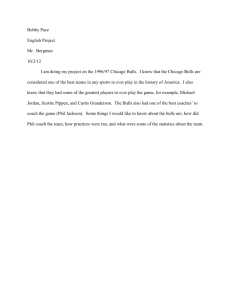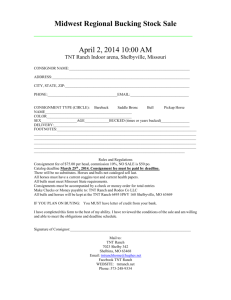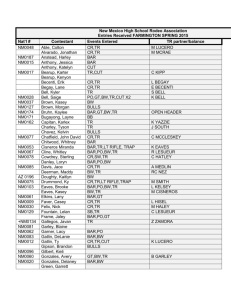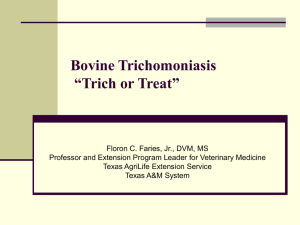Agribusiness Management-Chap 1
advertisement
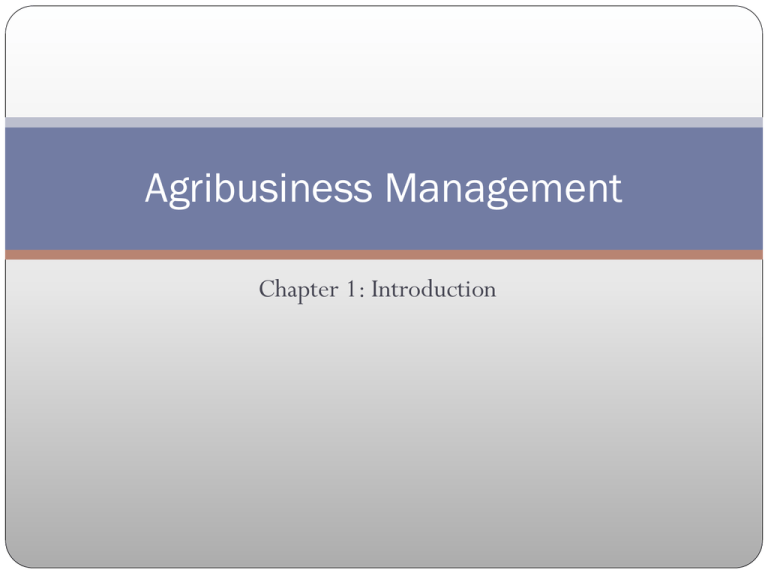
Agribusiness Management Chapter 1: Introduction Objectives Understand the functions of a farm or ranch manager and their responsibilities. Be familiar with the decision making process Have an understanding of goals and objectives, including the advantages and disadvantages of setting goals. Identify 3 types of goals. Exhibit an understanding of the guidelines for setting goals, prioritizing goals and the techniques that help in reaching goals. Functions of the Farm or Ranch Manager Planning Day to Day Operation (Implementation) Evaluation for Control of the Business Responsibility of the Farm or Ranch Manager Making all parts of the business work together while using resources such as land, labor and capital wisely in order to make the most profit. Decision Making Classifications of Decisions Importance Frequency Imminence Revocability Available Alternatives Strategies for Decision Making Reducing the number of daily decisions Collecting data to compare alternatives Establishing priorities based on importance Systematic Approach to Decision Making Better organize the thought process Achieve outcomes more closely related to the goals Be more timely in decision making The Steps of the Decision Making Process 1. 2. 3. 4. 5. 6. Define the problem Gather information about alternative solutions Evaluate alternative solutions Make decisions consistent with goals and objectives Take action and put your decision into effect Evaluate and accept the consequences Example Using the Steps of Systematic Decision Making The Smith ranch runs a cow-calf operation and owns 8 bulls and 300 cows on 1. 2. 3. 4. 5. 6. average. They are concerned that the cow-to-bull ratio is too high and may result in a smaller calf crop. Their goal is to have a calf crop percentage of 90%. They are trying to decide how to solve the problem of having too few bulls. Their options are to purchase one or more additional bulls or artificially inseminate the cows. Let’s work together and use the steps of the decision making process to solve the Smith’s problem. Remember the steps are: Define the problem Gather information about alternative solutions Evaluate alternative solutions Make decisions consistent with goals and objectives Take action and put your decision into effect Evaluate and accept the consequences Smith Ranch Cow-to-Bull Ratio Problem #3 Smith Ranch— Problem-Concerned that they do not have enough bulls resulting in a smaller calf crop. Alternative solutions- Purchase more bulls or implement an artificial insemination program. Evaluate alternatives-The Smith’s can purchase more bulls decreasing the cowto-bull ratio or they can begin to artificially inseminate a portion or all of the herd. Cost, time and labor all need to be looked at when comparing the two alternatives. Make a decision consistent with goals- The Smith’s goal is to have a 90% calf crop. Decide weather to purchase more bulls or begin an AI program. Put decision into effect. The Smith’s will either purchase more bulls or they will begin to use an AI program at breeding time. Evaluate and accept the consequences- Did the Smith’s reach their goal of a 90% calf crop. If they did not they will have to accept that consequence. Goals and objectives Goals Broad statements that show where you want to be after some period of time Examples To make profit every year on the farm To increase cash grain sales by 10% per year over five years. Objectives The steps that must be taken in order to attain goals Examples To increase wheat sales by 30% next year To keep accurate and complete farm business and family living records next year Guidelines for Goal Setting Goals should be Yours Written Realistic and attainable Have target dates Compatible Types of Goals Short Term Goals Those goals that can be achieved in less than 1 year. Intermediate Goals Goals that require 1-10 years for achievement. Long Term Goals Goals that usually require more than 10 years to accomplish Determining the Priorities of Goals Dollar Value Time Orderly Sequence Techniques in Reaching Goals Have regular check-ups Use saved time and effort wisely and effectively Organize efforts on a “things to do” work list Check for slow or nonmoving goals Modify goals as resources change or as the farm business and family use resources more efficiently Assignment Assignment Sheets 1-3 p. 7-10. You may skip #3 on assignment sheet 2. Due Date: end of period Wednesday August 21
